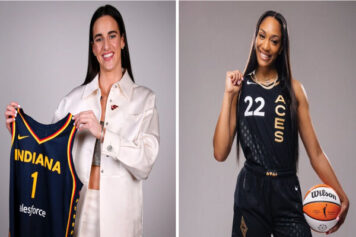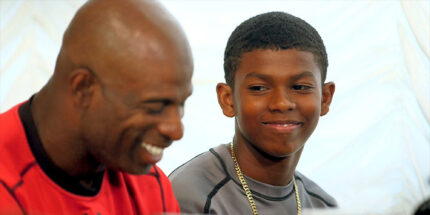The 007 film franchise was cutting edge in employing black actors, but most of the characters they portrayed were God-awful.
The James Bond character that was created by Ian Fleming has been revealed to be everything from sexist, chauvinist, imperialist and racist in his duties for the British crown. Yet even in that realization, we must humbly recognize that the James Bond movie franchise was often lightyears ahead of its contemporaries as far as representation is concerned.
There have been black actors and actresses employed in Bond movies for more than 40 years and that’s definitely a positive thing. A while ago, Esquire undertook a massive endeavor, which was to rank every Bond villain who ever existed from worst to first.
For those who are familiar with the Bond franchise, the makings of a villain are apparent. While motivations may vary, from greed to revenge to political interests or simply a generic desire to watch the world burn, the end result is always the same, James Bond kicks their ass.
But there are levels to everything, and for every villain who comes ever so close to killing James Bond, there’s another who is dispatched with such ease on the part of 007 that it’s a wonder why the director bothered shooting the scene at all.
As I perused the list of 104 villains and henchman that Esquire so graciously provided it became immediately apparent that most of the black Bond villains ranked below No. 48 on the list while the highest black Bond villain is only at No. 17.
The evolution of the Bond character himself, as well as those who surround him, is apparent. Bond has been known to be indiscriminate in the cruel yet efficient manner that he dispatches some of his foes.
Oftentimes, the sole reason for a villain to exist is so James Bond can kill him in an unnecessarily spectacular manner.
Whether judo chop, poison dart or by way of his trusty if not petite handgun, some poor schlep is gonna get it real bad depending on his importance to the overall story arc.
No. 104: Kra

Sonny Caldinez is a brother that black movie fans of a certain age can recognize, but I’d bet most of folks could place the face, and the frame, but not the name. Though his filmography isn’t all that brolic, he’s known for small parts in The Fifth Element and Raiders of the Lost Ark.
To many Bond fans he’s best known as Kra, the minor henchman that’s so meaningless that he doesn’t even get the dignity of being shot or stabbed. No, sir! It was the vat of boiling chemicals for him.
No. 103: Whisper
The only reason I can think of as to why Whisper, played by actor Earl Jolly Brown, is lower on this list than Kra is because he’s a racial stereotype of a henchman. You can see him at the 1:16 mark on this video. Fat, lazy, clumsy and unintelligent, Whisper “graces” the big screen in “Live and Let Die” and, you know what, he dies in a manner fitting for a two-dimensional buffoon that is embarrassing by the standards of modern society.
He makes it almost through the entire movie, screwing up royally along the way, before being locked in a metal container meant for Bond and never being seen again.
No. 90: Adam
At number 90, Adam is yet another brother who popped up in Live and Let Die. Though he wasn’t in the film for nearly as long as Whisper, the only reason he exists is so that he can be killed, which happens spectacularly in the boat chase scene.
He personifies jive-talkin’, afro-wearing, snarling black muscle with a cheap suit.
No. 88: Dambala
And what would a list featuring black Bond villains be without a cartoonishly racist voodoo practitioner, huh? Dambala, played by actor Michael Ebbin, is shot dead by Bond and that little ass gun he likes.
The whole voodoo thing, with the drums, the snakes and the sacrificing of white women, just gets stupider and stupider with time. Ebbin appears at the 2:02 mark of this clip.
No. 86: Rosie Carver
Rosie Carver, judging by her photo, was a bad-ass sister with a sassy disposition, but photos seldom tell the whole story. Rosie Carver, played by Gloria Hendry, was atrociously incompetent.
And it was around this time that I remembered that incompetence is par for the course for most black villains throughout cinematic history up until very recently. And, she was the very first Black Bond girl. So, props where due.
No. 79: Bambi and Thumper
Diamonds Are Forever is perhaps one of the most memorably named 007 films of all time, and the bodyguard duo of Bambi and Thumper were among the most ineffectual big screen antagonists I’ve ever seen.
Their martial arts expertise is rendered useless by a mere swimming pool. Pathetic. Their incompetence not only had racial, but gender problems as well.
No. 53: Dr. Kanaga aka Mr. Big
Live and Let Die is packed with black characters, and Yaphet Kotto’s ground-breaking role as Kanaga, the soul food and heroin don of New York City comes in at No. 53 simply because he’s Yaphet Kotto. Forgetting that this movie was shot in 1973, he’s a walking stereotype full of cliched language and mannerisms.
But, not for nothing, most Bond’s villains of all races and ethnicities are more two-dimensional than not. At least Kotto put some “umph” on it.
No. 46: Steven Obanno
Steven Obanno, played by underrated actor Isaach De Bankole, appears in Casino Royale, another film with more than the status quo of black actors. He comes in at No. 46. The brutal African warlord and financier of terrorism ventures to collect on a debt with a few henchmen and comes across Bond in a stairwell.
The resulting fight scene is perhaps the most brutal in the entire film. The fact that he had a machete? Yeah, that’s what we call a black cliche.
No. 36: The Blind Mice
James Bond – Dr. No – Three Blind Mice
James Bond – Dr. No Kingston Calypso – Three Blind Mice
The Three Blind Mice, played by Eric Coverly, Charles Edghill and Henry Lopez, appear in Dr. No (1963). The trio stumbles around Jamaica pretending to be blind before pulling out the ratchets and wetting up the scene.
I recall thinking about how gimmicky the characters were. Their blindness didn’t add anything of significance to the characters. Why they’re way up here at No. 36 on Esquire’s list is anybody’s guess.
No. 26: Mollaka
Mollaka comes in at number 26 on their list, and it’s curious he’s not higher than this. Played by actor Sebastian Foucan, Mollaka is a bombmaker and apparent Olympic level athlete in Casino Royal.
If you’ve ever seen the movie, you know Mollaka’s ridiculously athletic sequences are way out there. Though I wasn’t keen on the character’s motivations. However, at least he wasn’t a clown like so many others on this list.
No. 23: Baron Samedi
Baron Samedi, the great Voodoo God, is portrayed in Live and Let Die by the talented Geoffrey Holder. He appears very infrequently in the film and his apparent demise, as well as the end scene that appears to show him alive and well, still has fans scratching their heads about his true fate.
Whenever films venture into using indigenous religious and cultural practices as a way to add depth to a character they run the risk of creating a cardboard interpretation of the real thing. But since he appears in only a handful of scenes, viewers were found wanting more and not less of Samedi.
No. 21: Tee-Hee Johnson
Train Fight – Live And Let Die (1973)
Description
No. 21 is Tee-Hee Johnson played by Julius Harris in Live and Let Die. He’s got a metal arm, is a drug smuggler and a very Uncle-ish penchant for telling dark jokes and quips and Bonds expense.
I did appreciate that he was 007’s primary adversary throughout much of the film. However, I hated that robot arm. It looks cheesy even for 1973.
No. 17: May Day
At No. 17, the fashion-forward, superhumanly strong May Day is played by the incomparable Grace Jones in the otherwise forgettable A View to a Kill. May Day is the leading henchman and commands an all-women security team. For 1985, a black woman villain was considered next level progressive.
However, the fact that a character who is universally considered one of Bond’s best villains didn’t even crack the top 15 says a lot of things, and they’re all bad. Grace Jones’ portrayal was indeed one for the culture, and we didn’t even know it back then.



